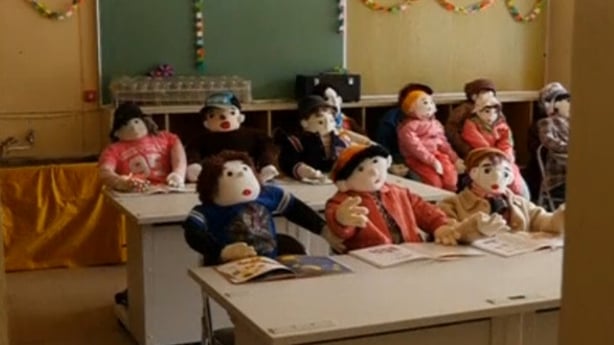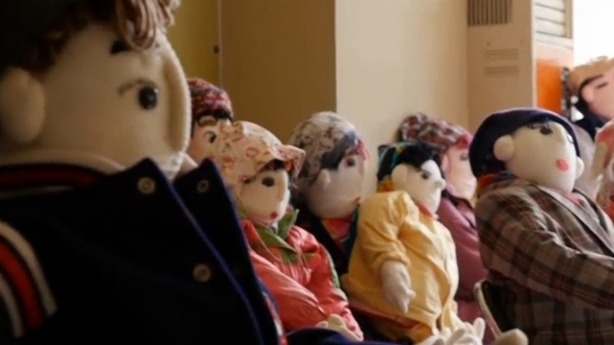While the population of the small village of Nagoro in southwestern Japan has been in decline for decades now, an army of scarecrows has popped up and outgrown the population of those still left behind.
Sitting in the fields, at the bus stops, in empty stores, and even beside living people as they work in their barns, scarecrows have taken over the shrinking village, frozen in time for a tableau that captures the motions of everyday life.
"When I was 20, there was around 150 people here. Now there's around 30 or so. It's maybe a fifth," said Mitsuhiro Uwagori, 84, as he cut firewood.

The population growth in scarecrows has been the work of one woman -Tsukimi Ayano.
She has been making the scarecrows by hand ever since she moved back to the village to help care for her mother.
She made the first life-sized doll to resemble her father 13 years ago. She then made more, and could not stop.
"This here is my father. This is him sitting out here between work just taking a rest," she says as she points to her first creation.
Originally, the scarecrows were created not to fill the emptying village, but to do exactly as their name suggests - scare away crows from her crops.
"I don't know if it's because the seeds were bad or if they were eaten by crows or pigeons but my crops didn't grow. So I thought that they were eaten by those crows.
"That's when I decided to create some scarecrows and that's what started all this," she said.
The scarecrows - or dolls - are built on a wooden base, with newspapers and cloth used to fill them out. They are often dressed in hand-me-downs, and the ones propped up outdoors are lined with plastic to keep them dry.
Ms Ayano explained that while 150 of her creations are currently out and about in the village, she has made over 350 over the course of the 13 years, many to replace those that slowly deteriorated in the open air.
Nagoro, like many villages in Japan's countryside, has been hard hit by the younger generation going to the cities for work and leaving mostly pensioners behind.
Its greying community is a microcosm of Japan, whose population has been falling for a decade and is projected to drop from 127 million to 87 million by 2060.
At 65, Ms Ayano is among the youngest residents of Nagoro.
The only school in the village was closed down in 2012 as the entire building was only being used by two children who were about to graduate.
Replicas of those last two students, the teachers and even the principal were added to other scarecrows that now sit silently in empty classrooms,

Sometimes the new ones she makes are made to order, usually in the likeness of young people who have left Nagoro or residents who have died.
Others though are simply that of Ms Ayano's imagination.
Despite full classrooms, and busy bus stops, the scarecrow population in Nagaro is likely to keep growing.
"From here on out as well, as long as I'm healthy I plan to keep making scarecrows.
"I enjoy it and then hopefully people can enjoy it as I look to make them even more life-like so that when people look at them they have to look twice and say 'Oh that wasn't a person!'. So I will keep making them," Ms Ayano said.
Tourists have started to come too, drawn by the two lifeless delegates guarding the road leading to the village, next to a board identifying Nagoro as "Scarecrow Village".
Ms Ayano is happy to show her work to visitors, as long as she is not disturbed while watching her favourite television soap opera. On her daily rounds, she walks around the village bidding her motionless creations a good morning and tends to their needs.


